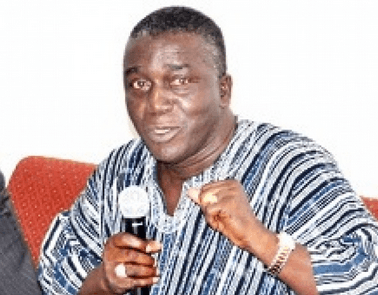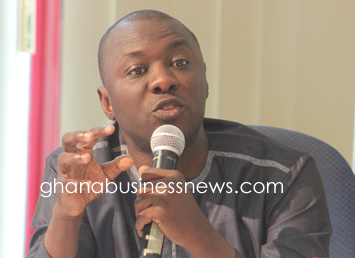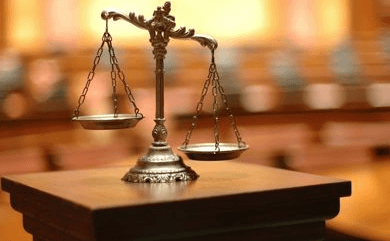

A look at the laws and subsequent voting patterns associated with the disenfranchisement of felons and ex-felons.
An estimated 6.1 million American adults were not allowed to vote in the 2016 election because they had a felony conviction on their record.
Most had already served their sentences and returned to their communities. The majority of US states take away felons' voting rights, occasionally for life.
This disenfranchisement affects an estimated one in 40 adult Americans, or 2.5% of the total US voting-age population, according to The Sentencing Project, a group that advocates criminal-justice reform.
That number is greater than the entire population of Missouri, and it's the largest single group of American citizens who are barred by law from participating in elections.
So many people are barred from the polls that some worry their absence could change election results. One study even suggested that allowing felons to vote in Florida could have tipped the 2000 presidential election to Democrat Al Gore.
About half of US states have loosened restrictions in recent years. But how this might affect the country's fractured politics is more complicated. Would ex-felons turn out to vote? And if they would, can we predict who'd benefit?
The US is a huge outlier when it comes to incarceration
The US has the highest incarceration rate in the world, with about 670 inmates per 100,000 residents, according to figures from the International Center for Prison Studies. Some estimates put the figure higher.
That rate is about five times the average of other developed economies in the Organization for Economic Cooperation and Development. The next-closest OECD state is Israel, which has an incarceration rate of about 250 inmates per 100,000.
The number of Americans incarcerated has increased over the past 25 years.
The rate for US residents ages 18 and up rose from about 310 per 100,000 in 1980 to about 870 per 100,000 in 2015, a spike correlated with the "war on drugs"-era tough-on-crime policies. The rate peaked in the mid-2000s at around 1,000 per 100,000.
Which brings us to the first divide: the disenfranchisement of those with a conviction
Few major economies around the world allow inmates to vote. Politicians and voters generally argue that if a person does not follow the law, then that person should not get to choose lawmakers.
In the US, the Fourteenth Amendment grants states the authority to deny voting rights to those with criminal convictions, and then states can come up with their own rules for restoring those voting rights if they choose.
Maine and Vermont are the only two states that allow people in prison to vote. But it's what happens after a person has served time for a felony that is more controversial.
Over three-quarters (77%) of disenfranchised voters are not actually in prison. Some are under probation or parole supervision, while others have completed their sentences, according to The Sentencing Project.
Twelve states — Alabama, Arizona, Delaware, Florida, Iowa, Kentucky, Mississippi, Nebraska, Nevada, Tennessee, Virginia, and Wyoming — restrict voting rights even after a person has completed a prison sentence and is no longer on probation or parole.
The affected people in those states make up over 50% of the entire disenfranchised population in the US.
Which brings us to the second divide: race
None of the laws barring ex-felons from voting explicitly mention race. The US, however, disproportionately arrests and convicts people of color. The effect is a huge disenfranchised voting bloc.
Black Americans of voting age are more than four times as likely to lose their voting rights as the rest of the adult population, with one of every 13 black adults disenfranchised nationally, according to the Sentencing Project.
An estimated 2.2 million black citizens are barred from voting in total.
The rates of African-American felony disenfranchisement vary significantly by state, with startling numbers in a few: more than one in five African-Americans is barred from voting in Florida (21%), Kentucky (26%), Tennessee (21%), and Virginia (22%).
"This is largely the result of the historic growth in incarceration in recent decades and disproportionate enforcement of the failed 'war on drugs' in black and Latino communities, which has drastically increased the class of persons subject to disenfranchisement," the Sentencing Project said.
"Felony disenfranchisement statutes have weakened the political power of black and Latino communities," it added.
The racial compositions of prisons versus the adoption of disenfranchisement laws
African American imprisonment rates have "consistently exceeded" those of whites since the Civil War era, according to US Department of Commerce data from the 19th century, cited in a study by Angela Behrens, Christopher Uggen, and Jeff Manza.
Looking at data from the 1850s to 2002, the trio found that states with greater nonwhite populations have historically been more likely to bar convicted felons from voting than states with proportionally fewer nonwhites.
"The expansion of citizenship to racial minorities, and the subsequent extenstion of suffrage to all citizens, threatened to undermine the political power of the white majority," Behrens, Uggen, and Manza wrote. "By restricting the voting rights of a disproportionately nonwhite population, felon disenfranchisement laws offered one method for states to avert [the changes]."
"The sharp increase in African American imprisonment goes hand-in-hand with changes in voting laws," they continued. "Felons disenfranchisement provisions offered a tangible response to the threat of new African-American voters that would help preserve existing racial hierarchies."
Notably, the percentage of nonwhite prison inmates nearly doubled from 1850 to 1870 in several Southern states, the authors also found. For example, about 2% of the Alabama prison population was nonwhite in 1850, but 74% of it was nonwhite in 1870 even though the total nonwhite population rose by just 3%, according to Department of Commerce figures from the 1800s.
What does this mean for elections?
It's difficult to predict how felon and ex-felon disenfranchisement affects election results for several reasons, including, for example, that it's hard to estimate how many ex-felons would turnout to vote if their voting rights were restored.
Ex-felons would most likely vote at lower rates than the general public, according to researchers. One study estimated that about 35% of disenfranchised ex-felons would have voted in presidential elections and 24% in Senate elections in nonelection years, while another found that fewer than 15% of recently enfranchised ex-felons actually voted in Iowa, Maine, and Rhode Island. The overall turnout for the 2012 presidential election was 58.6%.
As for political parties, some argue that allowing ex-felons to vote would benefit Democrats. A 2002 study by Uggen and Manza found that "Democratic candidates would have received about 7 out of every 10 votes cast by the felons and ex-felons in 14 of the last 15 US Senate election years."
Taking it a step further, when they examined how these figures would have affected elections, they found that seven Senate races out of over 400 might have been flipped from 1970 to 1998.
Of course, individual and group voting preferences are shaped by a bunch of social, economic, structural, and political factors. So there could be some underlying, unknown variables that would affect the predictions of how a large bloc of voters across different states might vote.
For example, not all states are required to inform ex-felons about their voting rights. And that's significant because one study by Marc Meredith and Michael Morse found that the notification "can increase ex-felon participation."
Which brings us to Florida ...
Florida, a key swing state in recent elections, alone accounts for 27% of the US population disenfranchised by felony, according to figures from The Sentencing Project. And the nearly 1.5 million people disenfranchised in the state after completing their sentences account for 48% of the national total.
Take the hotly contested 2000 election, which saw George W. Bush win by just 537 votes out of nearly 6 million.
Given the slim margin of victory, the outcome could have been different if felons and ex-felons were allowed to vote. Others, however, argue that Florida's large population of white felons would have leaned toward Bush anyway.
Uggen and Manza argued that the election "would almost certainly" have been reversed if "voting rights were extended to any category of disenfranchised felons."
On the flip side, Northwestern's Traci Burch, simulating outcomes for Florida 2000 under scenarios consistent with turnout rates of Georgia and North Carolina in 2000 and Florida in 2008, found that the ex-felon population in Florida would have leaned toward Bush.
So what's next?
Twenty-four states have changed felony-disenfranchisement provisions since 1997 to expand voter eligibility. According to data from The Sentencing Project, an estimated 840,000 citizens regained the right to vote from 1997 to 2016.
In some states, the restoration of voting-rights practices shift based on who's in charge. In Florida in 2007, for example, the clemency board voted to automatically restore voting rights for many with nonviolent felony convictions, but the decision was reversed in 2011.
Whether these policies will change in the future depends on which parties and politicians are elected to the run the states. And those with the most at stake sometimes can't take part in that decision.
A look at the laws and subsequent voting patterns associated with the disenfranchisement of felons and ex-felons. Read Full Story
























Facebook
Twitter
Pinterest
Instagram
Google+
YouTube
LinkedIn
RSS